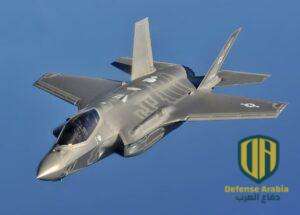
(Source Norwegian Defence Materiel Agency – FMA) – Forsvarsmateriell, the Norwegian Defence Materiel Agency, was responsible for conducting successful test drops of the JSM missile from the F-35A in the desert at Edwards Air Force Base in California in February.
Kongsberg Defense & Aerospace (KDA) is developing the JSM. The testing took place as part of the programme to integrate the JSM into the F-35, under the JPO (Joint Program Office) which is responsible for the F-35 cooperation programme, and is carried out in close cooperation with US authorities.
The first phases of the JSM integration work have been contracted directly with the US authorities. The testing started in 2020, and was carried out with drops from planes parked on the ground, and down into a foam rubber pit. Now the first drop was made from the air.
“With this first drop, it was checked that the JSM can be separated from an F-35A in a safe way. For that, we uses an instrumented aircraft,” says Brigadier Jarle Nergård, who is head of the F-35 department in the Defence Materiel Agency. This is an aircraft fitted with a number of sensors for speed, movement and vibration, as well as recording of the data bus traffic in the aircraft and communication to the weapon.
“This aircraft is also equipped with three cameras inside the weapons bay and has a separate camera pod mounted on the wing, with three more cameras. In order to be able to analyze exactly what is happening, both the aircraft and the JSM missile are marked with special photo marks that are accurately positioned. And from that, we can see through the videos exactly how the JSM missile behaves on its way out of the F-35A weapons bay”, Nergård continues.
Extensive testing
In addition, KDA has instrumented the missile so that all movements in the missile are recorded and sent via data link to the ground. The F-35A aircraft has similar instrumentation so that it is possible to know exactly how the aircraft behaves in the same time period, and this data is also sent via data link to the ground. It is also flown with a chase, ie escort aircraft, in the form of a two-seater F-16 with a cameraman in the back seat who films everything that happens from a short distance.
All these data and videos are further analyzed by the Norwegian team (FMA, KDA, FFI). The US Air Force Seek Eagle Office (AFSEO) approves the integration of the JSM on the F-35A, and data from aircraft and videos are analyzed by AFSEO, and the test squadron at Edwards Air Force Base. The data are compared with the data models that have been created previously by both KDA and AFSEO.
“We start quite simply, and then we build so that the conditions around separation from the plane become more and more challenging. The missile has already been tested extensively throughout its ‘flight envelope’, but some of the tests from the F-35 will also include a longer free flight for the missile,” Brigadier Jarle Nergård concludes.






Be the first to comment